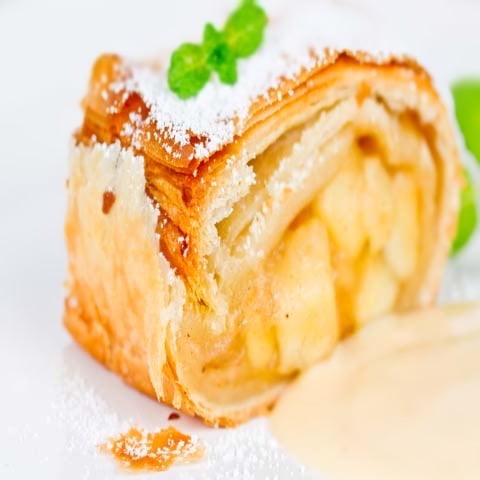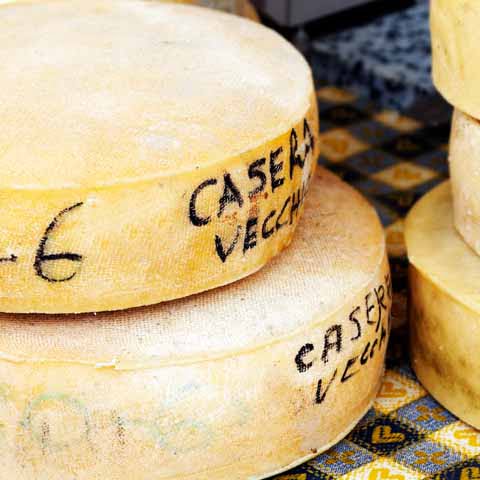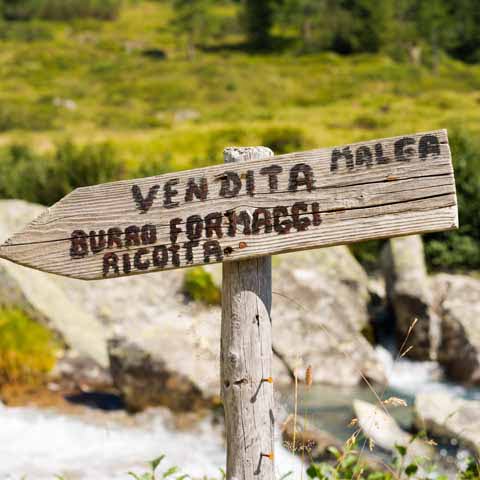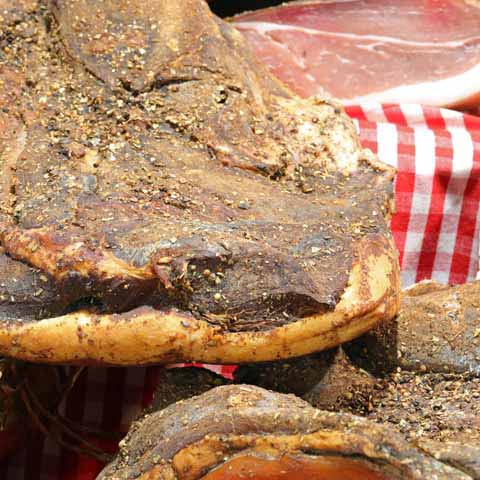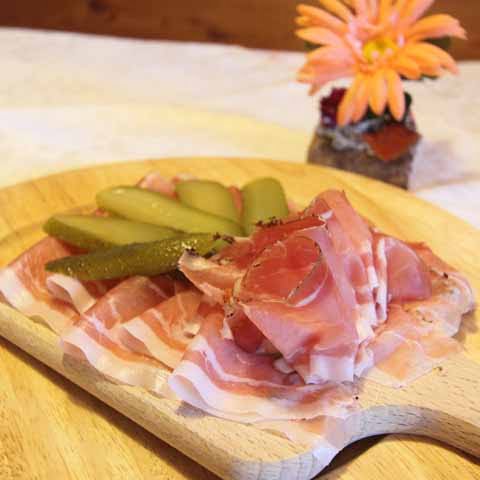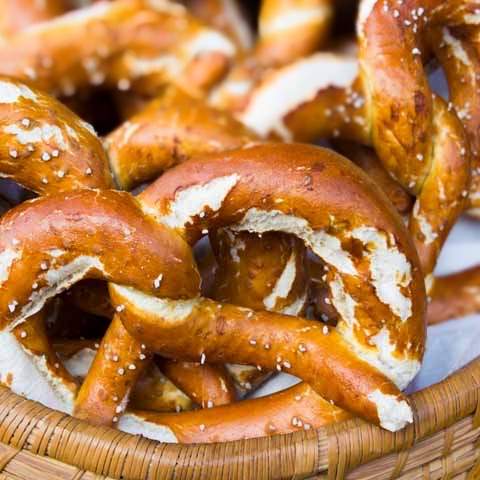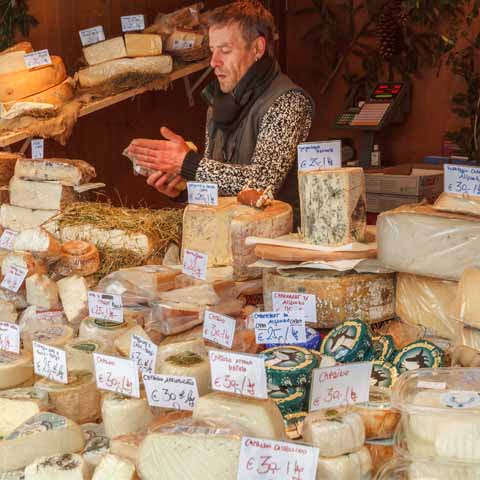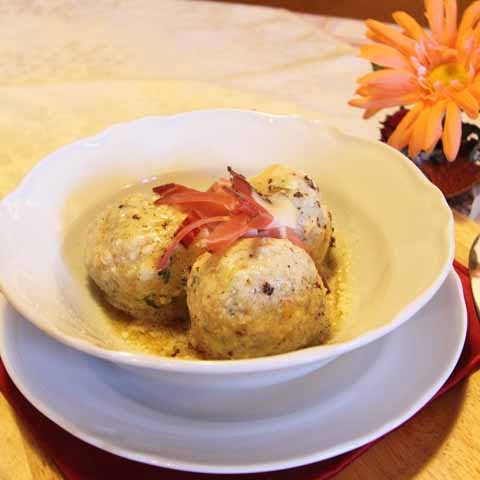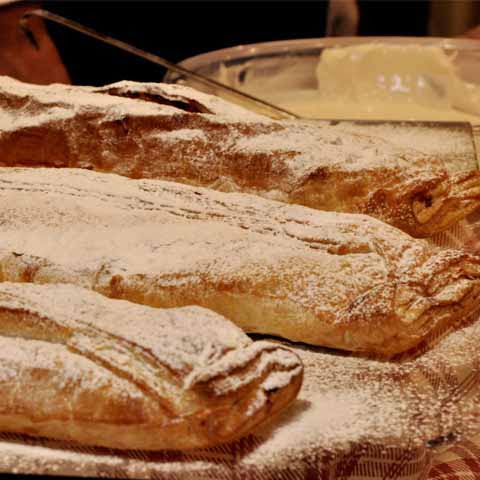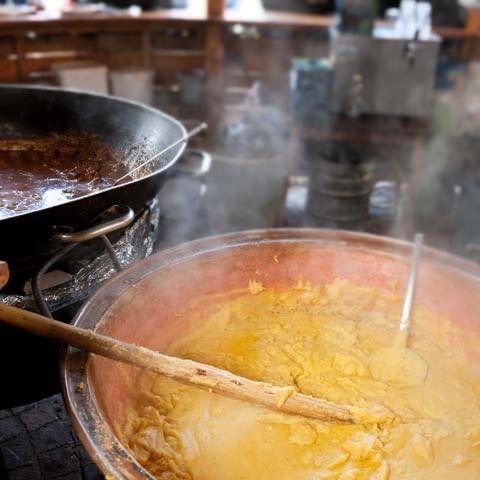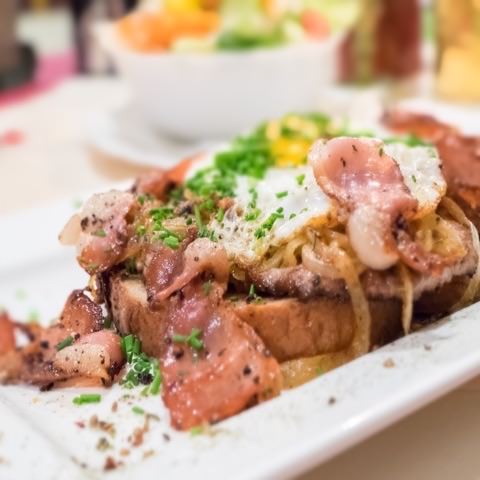Trentino Alto Adige Food and Wine Travel Guide
Trentino-Alto Adige is one of the northern most regions of Italy that shares more than just a border and picturesque snowcapped mountains with Austria. While there is evidence of some Mediterranean inspiration, Austrian and German influences contribute to the region being known as radically different than the rest of Italy, both in culture and cuisine.
The pride and joy of tables across the region is Speck and Schüttelbrot, a boneless cut of ham unique to the region. The meat is cut into small square pieces and placed in a saltpeter along with various seasonings such as garlic, laurel, juniper, pepper, and many other flavorful herbs. The ham is then hung in an aerated smokehouse where at a low temperature, smoke envelopes the meat for a few hours each day. Speck and Schüttelbrot is made mainly in the Venosta valley, and this traditional delicacy is often served up with a crunchy and delicious flatbread that locals refer to as Schüttelbrot.
Nature’s bounty is even sweeter in the form of Mela Val di Non, Italian apples produced in orchards in the Trento province, where rainfall gathers and flows through the Noce, Val di Sole, and Val di Non rivers. Like many of the valleys of Trentino-Alto Adige, the growing and harvesting of these apples is crucial to the local economy, making it somewhat of a symbol for the region.
The beautiful orchards found scattered across the valleys are sought out by many interested in this unique industry. The range of apples here are diverse and plentiful, including Granny Smith, Golden Delicious, Rennet, Stark, Elstar, Royal Gala, Morgenduft, Fuji, Stayman, Gloster, Jonagold, Idared, and Braeburn. With so many delicious options to choose from, apple strudel is a locally celebrated dish and a favorite among tourists.
Appetizers and Entrees
Kaminwurz, sometimes referred to as kaminwurze, is a savory sausage produced locally in Trentino-Alto Adige. Air-dried and cold-smoked, the sausage has a mouthwatering combination of beef, pork and back fat flavorings. While it is commonly consumed as an appetizer or snack, it can also be a perfect sandwich filling.
Often considered a street food, Tortel Di Patate is delicious pancake treat comprised of potatoes, cheese, flour, and beer. Depending on the meal at which it is served, some even choose to add mixed vegetables to these ingredients. The portability and richness of this appetizer make it almost impossible for even the pickiest of eaters to take just one bite.
Carne Salada e Fasoi is a typical dish of the region, particularly of Lake Garda Trentino. A handful of quality ingredients including first-choice rump beef, salt, bay leaves, juniper berries, garlic, pepper, and a pinch of rosemary make it an easy appetizer to assemble. Depending on your time and the occasion, carne salada can be served raw or cooked. Carpaccio, or the raw version of this dish, is thinly sliced and is commonly served with a drizzle of Garda Trentino extra virgin olive oil and parmesan cheese shavings.
When serving the cooked version of carne salada, it is of a thicker cut and is paired with fasoi, or beans, and a slice of bread.
First Course
Especially in colder weather seasons, Bro Brusa is a body warming must for first courses. Bro Brusa is a winter soup made with beans and bacon. The dish is prepared by mixing flour, olive oil, and butter until something reminiscent of a brownish roux is formed, and then broth is added and combined into the mixture before bacon and beans are added. In regional dialect, Bro Brusa means burnt broth, a nod to the thick brown roux-like substance the dish is made from.
Canederli is a bread-based favorite in Trentino-Alto Adige made of simple ingredients that earn it the nickname “Cucina Povera,” or cuisine of the poor. True to its name, it is made from four basic ingredients including stale bread, eggs, milk, and flour. The bread dumplings are sometimes stuffed with cheese and are prepared, boiled, and then typically served in melted butter or broth. Regardless of how they are served, canederli is extremely popular in Austria and in other parts of central Europe, where they are sometimes referred to in German as Semmelknödl or just knödel.
Second Course
A hearty and savory second course favorite of the region is Osei Scampadi, a dish comprised of several pieces of veal meat wrapped in bacon and sage. In its original dialect, the phrase “Osei Scampadi” means scattering birds and was called as such since it was a staple for hunters returning from their journeys with no spoils.
Lucanica is a popular sausage of Trentino-Alto Adige that is made from minced pork and seasoned with salt, fine and course black pepper, ground red pepper, and minced garlic. It is often served with a polenta or rice-based side. This dish is truly a classic that can be found on every dinner table in the region.
Another locally preferred dish is Fasoi Embragati, a hearty serving of beans, lucanica, onions, tomato sauce, and a few leaves of laurel that deliciously fill the stomach and keep one warm during the colder winter months typical of the mountainous area.
One of the truest examples of the simple and somewhat poor cuisine of Trentino is Sguazet. The stew is comprised of offal, or the entrails and organs of an animal, and giblets, making it a common food among poorer classes as it used the often wasted parts of animals not normally used in cooking.
Sides
A favorite for cheese lovers is TrentinGrana, a hard slow-ripened, semi-fat cheese that is considered a delicacy in Trentino-Alto Adige. Often used as an ingredient in other dishes or even as a standalone snack, this cheese is made only with alpine cow’s milk.
Puzzone di Moena is one of the region’s more fragrant cow’s milk cheeses, hence its name “puzzone” which means stinky. The uniqueness of this particular cheese lies in the aging and regular treatment of the thousands of cheeses often found in just one warehouse. The process is an in depth one that requires a weekly turning and washing with a damp cloth of every cheese in the warehouse over the span of up to six or seven months. The washing of the rind creates a creamy layer and encourages bacterial fermentation, which is largely responsible for the cheese’s intense odor and distinctive brick- red rind.
Much of the Trentino-Alto Adige region thrives on polenta. The corn-based dish can also be made from potatoes or buckwheat and is typically used in a cake of sorts called smacafam that is made with sausage, salt pork, and sometimes cheese. Depending on the area, the preparation and ingredients of polenta can vary. Some valleys mix cornmeal and flour Saracen wheat, which yields a strongly-flavored and darker colored polenta. Other areas prepare it with potatoes and local cheeses before serving it with cucumbers, pickles, or even bean salad.
Desserts
Trentino-Alto Adige’s world renowned apple orchards greatly contribute to the area’s most famous dessert, apple strudel. This showstopper is made with a shortcrust pastry, pine nuts, apples, raisins, and cinnamon. While it is true that one can find apple strudel on dessert menus across the globe, none will
have quality apples like those grown in the sweet valleys of this part of Italy.
Zelten is German for the word “rarely” and was named as such since this traditional, rich fruitcake is primarily served during the Christmas season. Zelten is studded with tree nuts and dried fruits and then packs in flavor with various spices as well as grappa or rum. This creation can be personalized with whatever shape the baker chooses but is frequently served in heart, oval, or rectangular shapes. Zelten recipes vary from home to home and are fiercely guarded as treasured family recipes.
Torta de Fregoloti is another tasty sweet typical of Trentino Alto Aldige’s culinary tradition. While typically the dish’s ingredients consist of butter, flour, eggs, sugar, and minced almonds, local valleys take great pride in adding unique touches that truly make it their own creation.
Street Food
Any time is a good time for sweets! Krapfen is no exception. These soft, fluffy donuts are filled with custard, jam, or chocolate and most frequently abound during festive Christmas and Carnival periods within the region.
With a variety of delicious homegrown apples at the region’s disposal, the fruit isn’t used just for strudel. Apfelkiechl are scrumptious portable apple pancakes sold from area kiosks and food carts for visitors wanting a taste of Italy that travels well.
Bauerntoast, locally known as Farmer’s Toast, is a dark sourdough bread layered with sliced cheese, hardboiled egg, onion and tomato slices. This tasty snack really sets itself apart as one of the few salty street foods found in Trentino-Alto Adige.
Wines
The natives of Alto Adige and Trentino had two very distinct cultures that still carry over to the region’s wine offerings.
Alto Adige is extremely mountainous with only fifteen percent of the land suitable for cultivation. The most popular grape variety is a red one, Schiava, which is sometimes referred to by its German name of Vernatsch. This grape accounts for over 60 percent of Alto Adige’s wines and is frequently a base for local light-bodied red wines. One of the most popular of these wines is St. Magdalener or Santa
Maddalena, which is grown on the gorgeous slopes above Bolzano. Perhaps the region’s best known wine is Caldaro or Kalterersee. Almost 15 million bottles are produced each year from vines around its namesake’s lake.
The area of Trentino is home to Italy’s largest production of Chardonnay and is known for being a leader in the sparkling wine industry. Ferrari is one of Italy’s best sparkling wine houses, but Trentino is also known for fine red and white wines.
In both Trentino and Alto Adige, more space is being devoted to producing Cabernet Sauvignon and Merlot, which can be used as a standalone or in blends. Lagrein Kretzer is considered to be one of the area’s finest roses. A highly prized dessert wine, Moscato Rosa, is distinctive because of its grand flowery aroma.
Grappa, a type of brandy made in Trentino Aldo Adige, is made from the remains of grapes pressed in winemaking. The classification of grappa is largely based on age and processing method.
The grappa made from aromatic grapes such as Moscato, Traminer, Müller Thurgau and others accounts for forty percent of the total. Grappas offer great variety with some being flavored with herbs, roots, bedstraw, blueberries, and raspberries. Reserve grappa accounts for 35 percent of grappa and is aged in oak for about 24 months, with its color ranging from straw yellow to intense amber. The remaining 25 percent of grappa is made from mixed grapes and is bottled at the end of distillation or a brief rest in a steel or glass container.
When traveling in Trentino-Alto Adige, visitors are privileged to taste amazing and unique cuisine of this northern region of Italy that is not easily found elsewhere in the country.
Travel Guides
